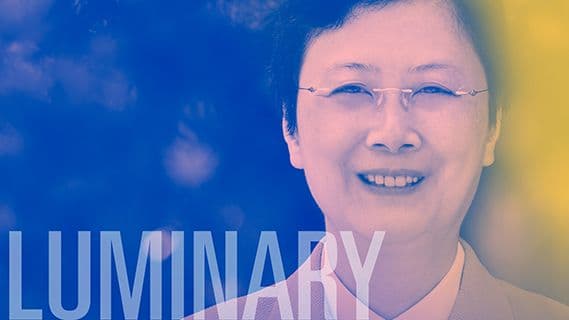Power for lighting makes up almost one-fifth of global energy use; Professor Vivian Yam says that one way to change that will be to make lighting more efficient. Yam is the Philip Wong Wilson Wong Professor in Chemistry and Energy at The University of Hong Kong and an Associate Editor of Inorganic Chemistry. Her interest […]

Power for lighting makes up almost one-fifth of global energy use; Professor Vivian Yam says that one way to change that will be to make lighting more efficient.
Yam is the Philip Wong Wilson Wong Professor in Chemistry and Energy at The University of Hong Kong and an Associate Editor of Inorganic Chemistry. Her interest in chemistry dates back to childhood, drawing inspiration from the natural world to address complex technological challenges like more efficient lighting.
Yam’s work focuses on excited state dynamics and organic light emitting diodes (OLEDs) for use in solid-state lighting and full-color displays. One way to achieve that efficiency is by blending red, green and blue light or yellow and blue light to make the white light we use each day. But that comes with challenges. Using OLEDs to produce white light or display requires having control over the purity of the color, something by tuning the HOMO-LUMO energy gap of a molecule. Attaining that control requires mastery over the molecular structure, molecular conformation and how molecules are packed together, as well as an understanding of how their behavior changes when excited.
“We have to really understand this excited state dynamics, try to harness the excited state, and then how we can sort of improve on this in performance and make a very robust, as well as highly efficient emitters for OLEDs,” she said.
A greater understanding of excited states could have an impact outside of lighting and display as well; for example in solar energy harvesting and solar fuels. Learning how molecules communicate electronically, orientate themselves, pack themselves, and align themselves in an orderly manner could aid in charge transport and in developing organic resistive computer memory, which could significantly increase digital data storage capacity. This kind of broad application of knowledge has long been a passion of hers.
“I was telling my students that you should not only focus on your narrow field of research, you should read very widely. You need to be wide-ranging in your knowledge to solve the very important scientific problems,” she said.
“If you think of Leonardo DaVinci, I mean he was good at everything: good at art, engineering, science, I mean everything.”
“For students, you need the fundamentals. You really need a very strong foundation of understanding principles, the concepts, the fundamentals. From there on, it’s a life-long learning process because technology has been moving so fast.”
Read Selected Research from Professor Vivian Yam:
Supramolecular Self-Assembly of Amphiphilic Anionic Platinum(II) Complexes: A Correlation between Spectroscopic and Morphological Properties
J. Am. Chem. Soc., 2011, 133 (31), pp 12136–12143
DOI: 10.1021/ja203920w
A Phosphole Oxide-Containing Organogold(III) Complex for Solution-Processable Resistive Memory Devices with Ternary Memory Performances
J. Am. Chem. Soc., 2016, 138 (20), pp 6368–6371
DOI: 10.1021/jacs.6b02629
Synthesis of Luminescent Platinum(II) 2,6-Bis(N-dodecylbenzimidazol-2′-yl)pyridine Foldamers and Their Supramolecular Assembly and Metallogel Formation
J. Am. Chem. Soc., 2017, 139 (25), pp 8639–8645
DOI: 10.1021/jacs.7b03635
Versatile Design Strategy for Highly Luminescent Vacuum-Evaporable and Solution-Processable Tridentate Gold(III) Complexes with Monoaryl Auxiliary Ligands and Their Applications for Phosphorescent Organic Light Emitting Devices
J. Am. Chem. Soc., 2017, 139 (27), pp 9341–9349
DOI: 10.1021/jacs.7b04788
